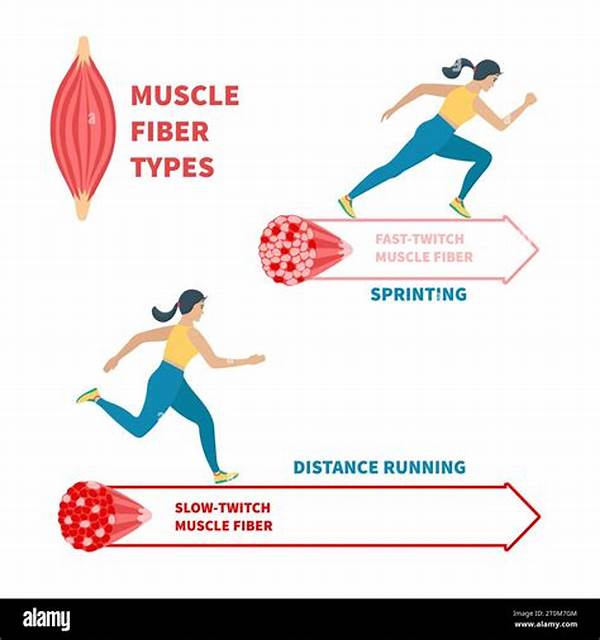Differences Between Fast-twitch And Slow-twitch Muscle Fibers

Differences Between Fast-Twitch and Slow-Twitch Muscle Fibers
Read More : Speed strategies In Running And Motorcycle Racing
In the world of fitness and athletic performance, understanding muscle fibers is crucial for optimizing training and achieving desired results. The differences between fast-twitch and slow-twitch muscle fibers can greatly influence your approach to exercise and your overall performance in various physical activities. Imagine having the insider knowledge to fine-tune your workouts for maximum efficiency, whether you’re chasing a new personal best on the track or simply striving for better fitness. Now, let’s dive into the exciting world of muscle fibers and unlock the secrets hidden within your muscles.
Fast-twitch and slow-twitch muscle fibers are the two main types of muscle fibers that serve different purposes in the human body. Imagine fast-twitch fibers as your body’s race car engines. These fibers are designed for quick, explosive movements and are predominantly used during activities like sprinting, weightlifting, and jumping. On the other hand, slow-twitch fibers are more like diesel engines, built for endurance and stamina, making them ideal for long-distance running, cycling, and swimming. Each type of muscle fiber has its unique characteristics, allowing you to tailor your training to better suit your goals.
The differences between fast-twitch and slow-twitch muscle fibers also extend to their composition and functionality. Fast-twitch fibers, also known as Type II fibers, have a larger diameter, generate more force, and contract more quickly than slow-twitch fibers. However, they fatigue rapidly and require longer recovery periods. In contrast, slow-twitch fibers, or Type I fibers, have a smaller diameter, produce less force, and contract more slowly, but they are highly resistant to fatigue, allowing for continued performance over longer periods.
Understanding these differences is essential for athletes, coaches, and fitness enthusiasts alike, as it can influence training decisions and ultimately lead to better performance outcomes. For those looking to build explosive strength and speed, workouts focusing on fast-twitch fibers might include high-intensity interval training (HIIT), plyometrics, or heavy resistance training. Meanwhile, endurance athletes might benefit from exercises that emphasize slow-twitch fibers, such as long-distance running, cycling, or rowing.
The Science Behind Muscle Fibers
Research into the differences between fast-twitch and slow-twitch muscle fibers has revealed fascinating insights into how our bodies adapt to various forms of exercise. Scientists have discovered that our muscle fiber composition can be influenced by factors such as genetics, age, and even training type. This means that while you may start with a certain predisposition to one type of fiber, focused training can shift this balance over time, optimizing your muscles to better suit your goals. How’s that for a workout hack?
—Introduction to Muscle Fiber Types
Delving into the realm of muscle fibers is like unearthing the intricacies of a well-oiled machine. As diverse engines propel cars to their destinations, fast-twitch and slow-twitch muscle fibers fuel our bodies differently. These fibers dictate how we perform activities ranging from a leisurely jog in the park to a high-stakes sprint on the track. For fitness enthusiasts and athletes alike, understanding the differences between fast-twitch and slow-twitch muscle fibers can be the key to unlocking peak physical performance.
Fast-twitch fibers are the powerhouse athletes of the muscle world. These fibers excel in providing instant power and swift movements. Imagine the explosive thrust of a sprinter dashing off the starting block or the dynamic force behind a weightlifter’s hoist. Fast-twitch fibers are responsible for these feats, and those with a naturally higher proportion of these fibers often excel in short-duration, high-intensity sports.
Conversely, slow-twitch fibers are the endurance champions, sustaining us through prolonged activities. Picture a marathon runner gracefully striding across miles or a cyclist pedaling smoothly for hours. These fibers are designed for stamina and are highly efficient in converting oxygen into energy. Athletes with a dominance of slow-twitch fibers typically excel in endurance sports, where the ability to withstand fatigue is paramount.
Read More : Sky Sports Presents Exclusive Talk Shows With Football Legends
Understanding these fiber types is not just for athletes. Even if your goal is general fitness or weight management, knowing how to train these fibers can elevate your exercise regimen. If you’re striving for bursts of speed, incorporating training that targets fast-twitch fibers, such as sprint intervals or strength training, can be beneficial. Conversely, if you’re aiming for endurance, exercises that target slow-twitch fibers, like long-distance running or cycling, should be your focus.
The Role of Genetics in Muscle Fiber Composition
Our genetic makeup influences our muscle fiber type distribution. Studies suggest that genetics may determine whether someone is more inclined towards fast-twitch or slow-twitch fiber dominance. This genetic makeup can explain why some individuals are naturally more adept at sprinting, while others excel in marathon running. However, it’s important to note that specific training regimens can optimize what we naturally possess, fine-tuning our performance capabilities.
Training Strategies for Muscle Fiber Development
Understanding the differences between fast-twitch and slow-twitch muscle fibers also aids in crafting effective training strategies. Incorporating a mix of exercises that target both fiber types results in well-rounded fitness. For instance, athletes may focus on hypertrophy and explosive power from fast-twitch fibers, while still benefiting from the endurance and stamina provided by slow-twitch fibers.
—Head Over to These Fiber Strategies!
Muscle fibers shape our movements exquisitely, guiding our efforts in sports and everyday activities. The differences between fast-twitch and slow-twitch muscle fibers inform how we train and perform. While genetics play a role, exercising with intention can shape our physical prowess over time. By tapping into this knowledge, we can unleash surprising potential within our bodies and, perhaps, redefine what we thought was achievable.
Training for Maximum Efficiency
Gone are the days of universally applied training regimens. Now, with the knowledge of muscle fiber types, athletes can streamline their training for efficiency. Catalyze explosive power with high-intensity workouts and refine endurance through controlled, steady-state exercises. Personalization of this caliber can translate into optimal performance and personal victories. Isn’t that what we all strive for, to sprint and endure our way to success?
Fibers and Your Fitness Goals
Connecting with your unique muscle fiber composition allows for an exploration of personalized fitness. This tailored approach offers the promise of high-reward outcomes and optimal performance, with training techniques that speak directly to the fibers made for your purpose. Imagine conquering races with ease or lifting new heights, all due to the understanding of your muscle makeup. Let these insights guide your exercise journey and become a stepping stone to unlocking your greatest athletic achievements.



